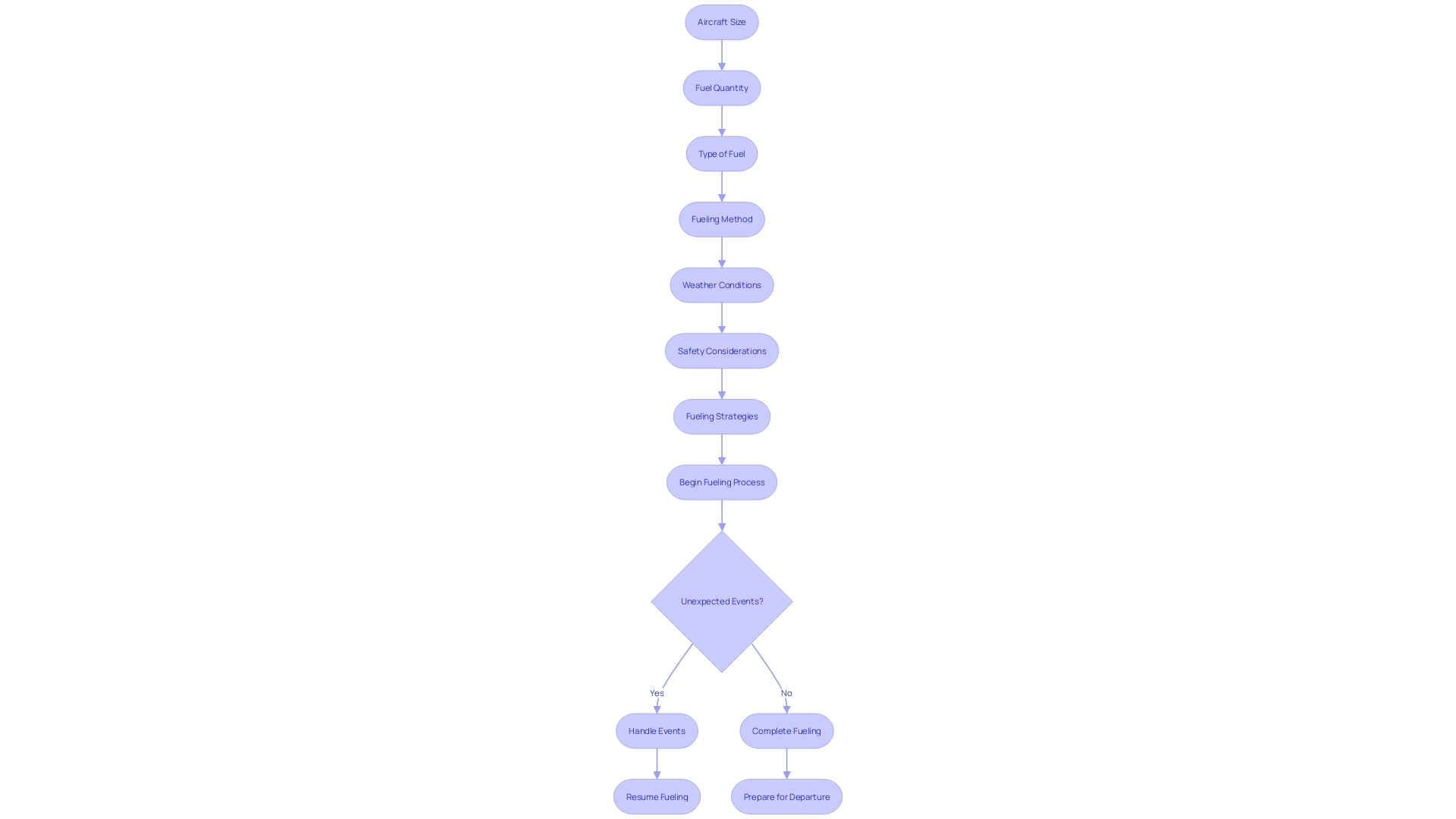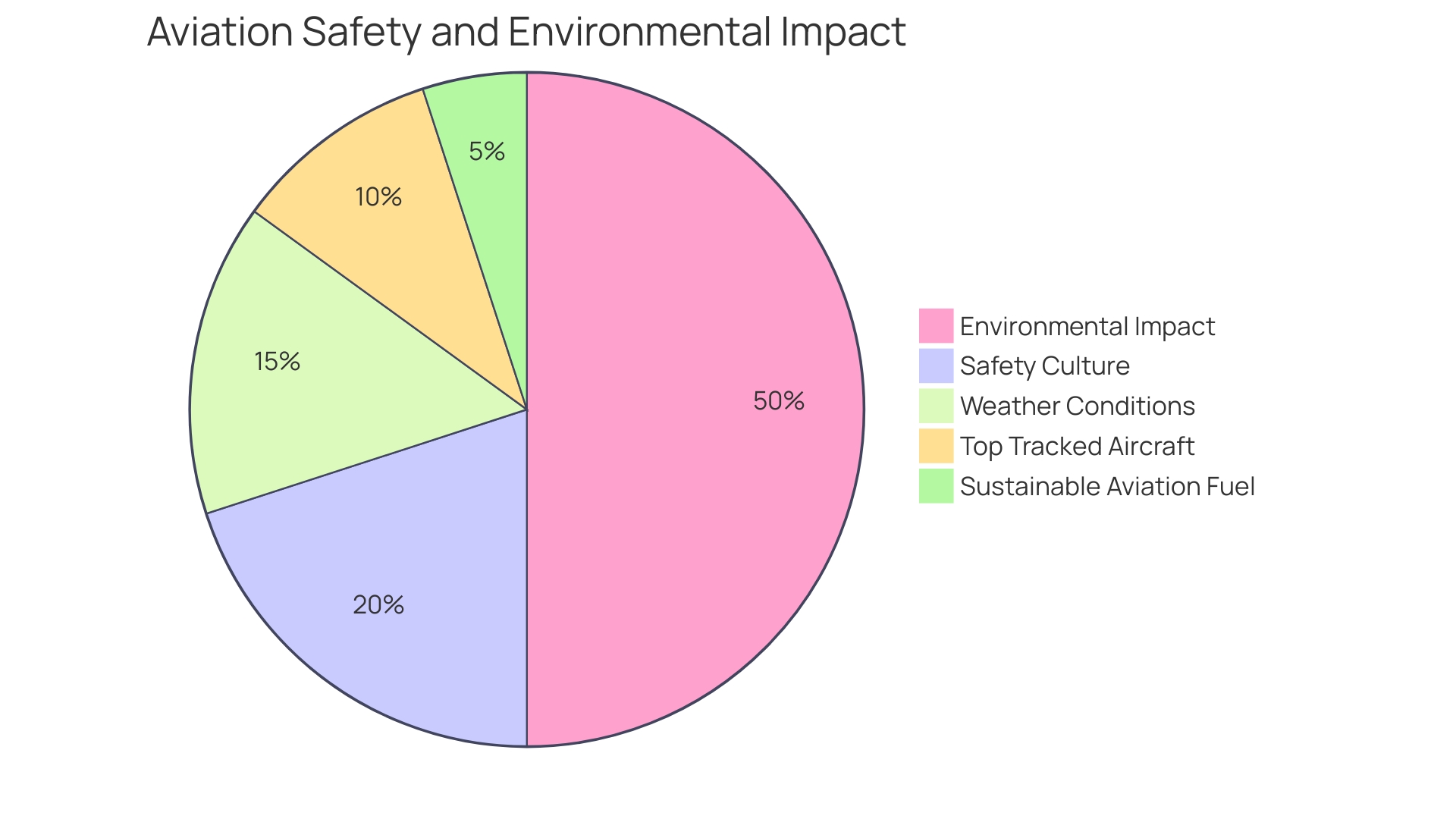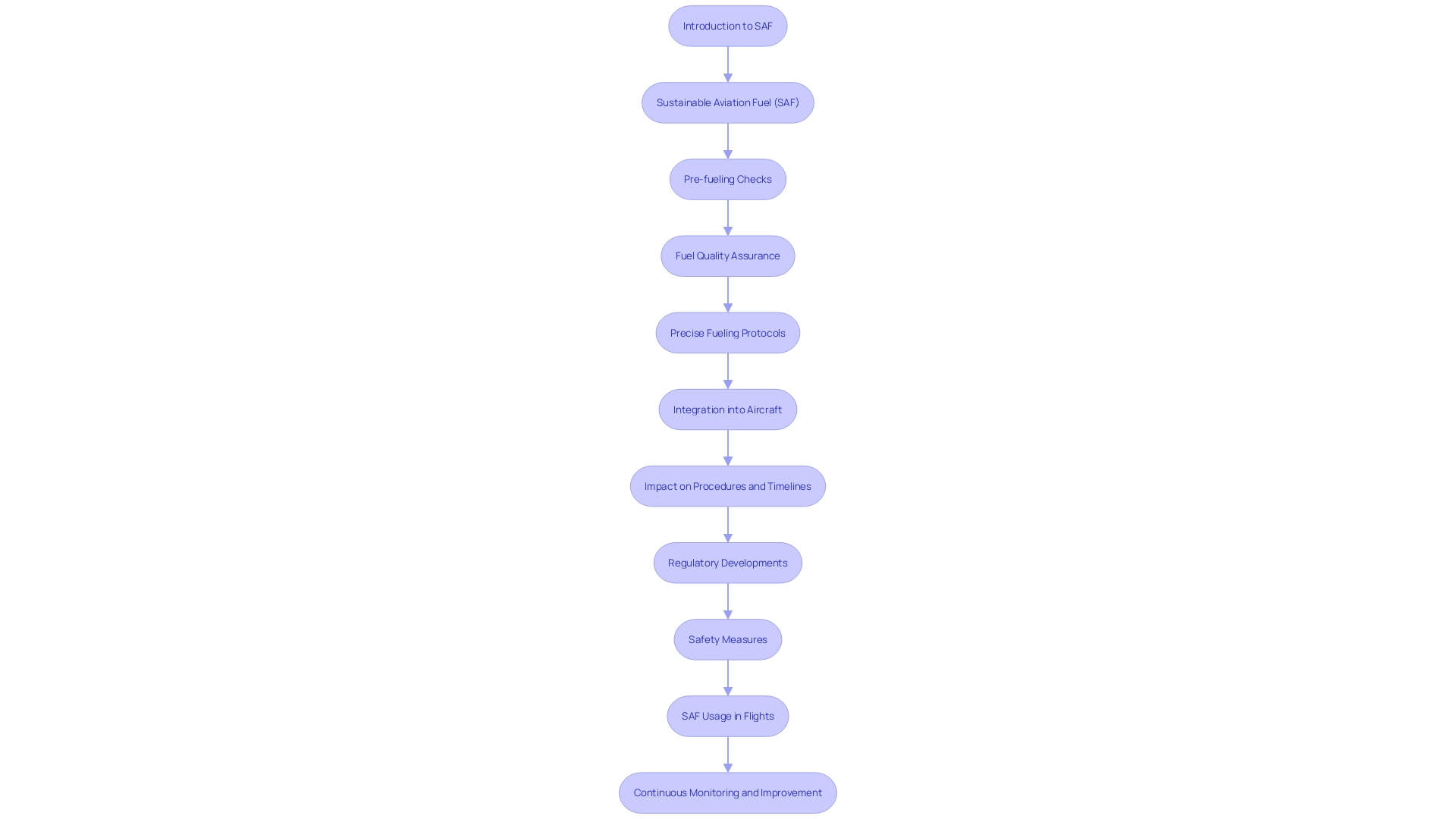Introduction
The fueling process in the aviation industry is a complex operation influenced by various factors. From the size of the aircraft to the type of fuel used and the method of fuel delivery, each element plays a crucial role in determining the time required for refueling. Weather conditions, safety considerations, and unexpected events further impact the efficiency of the process.
As the industry embraces renewable fuels like hydrogen and sustainable aviation fuel (SAF), new considerations arise, such as infrastructure requirements and the compatibility of fueling methods. With a deep understanding of these factors, the industry strives to optimize fueling processes and minimize ground time, ensuring the efficient turnaround of aircraft. This article delves into the intricacies of the fueling process, providing technical insights and analysis for an audience with a deep understanding of the renewable fuels industry.
Fueling Process Duration
The time required to refuel an aircraft is influenced by a myriad of factors, ranging from the aircraft's size to the type of fuel used, as well as the method by which the fuel is delivered. For instance, fueling times can be significantly affected by weather conditions at the airport, which can lead to delays. Understanding the interplay of these elements is key to optimizing the fueling process and minimizing ground time for aircraft.
Commercial aviation maintains a rigorous safety culture, and this extends to fueling operations. The industry's commitment to safety can sometimes mean that additional time is needed to ensure that fueling is conducted under the safest conditions, especially when dealing with volatile weather.
The fueling method itself is also a critical factor. For example, the advent of hydrogen-powered aviation, as demonstrated by the H2FLY partnership with Air Liquide, has introduced new considerations such as the handling of liquid hydrogen tanks and the infrastructure required to support such technology. The industry is working toward a 15-minute target for refueling aircraft that require 3.5 tons of liquid hydrogen, a benchmark that underscores the evolving nature of aviation fueling operations.
Moreover, fueling strategies can be influenced by unexpected events, such as the need to divert flights due to harsh weather, medical emergencies, or mechanical issues. These diversions can affect fuel consumption and the subsequent need for refueling, which in turn impacts the scheduling and logistics of fueling services at airports.
With the integration of new fuel types and technologies, the process of refueling is becoming an increasingly complex operation that necessitates a comprehensive understanding of the various factors at play. As the industry continues to evolve, the role of fueling in ensuring the efficient turnaround of aircraft remains a critical component of commercial aviation operations.

Aircraft Size and Fuel Capacity
The intricacies of aircraft fueling are influenced by various factors, with the aircraft's size being a prominent one. The fueling process is not merely a matter of time; it encompasses a complex interaction between the aircraft's design and fuel requirements. Notably, the Airbus A380, the world's largest passenger airplane, can carry up to 853 passengers if configured solely with economy seats.
Its fuel tanks are proportionately larger than those of smaller aircraft, which translates to longer fueling times. In contrast, smaller regional jets can complete the fueling process relatively quickly, often in just a few minutes.
As the aviation industry evolves, the introduction of sustainable aviation fuel (SAF) is set to revolutionize fueling protocols. SAF, a renewable energy source compatible with existing jet engines, is gaining traction due to increasing public and private investments. This shift is significant, considering that the fundamental properties of jet fuel have remained relatively unchanged since the 1950s.
The transition to SAF necessitates a thorough understanding of its impacts on fueling times and aircraft operations, as noted by Robert McCormick of the National Renewable Energy Laboratory.
Moreover, in the realm of commercial aviation, every minute counts. Airlines continually seek strategies to optimize operations and reduce costs. As fueling is a critical component of turnaround times, any enhancement in fueling efficiency can contribute to more punctual departures and arrivals, crucial during peak travel seasons like Thanksgiving.
In the context of data's pivotal role in aviation, advancements in fuel sensors and automated processes enable the development of more efficient engines and tailored passenger experiences. This data-driven approach extends to fuel management, ensuring aircraft are fueled safely and efficiently, highlighting the industry's commitment to precision and reliability.
Fueling Method
Refueling methods greatly influence the efficiency and environmental impact of aviation operations. While gravity refueling, where fuel is transferred via gravity from the storage tank to the aircraft's tank, suits smaller aircraft, it is slower compared to pressure refueling, which employs pumps to expedite the fuel transfer, making it ideal for larger aircraft. However, with the industry moving towards sustainable aviation fuel (SAF), the compatibility and impact of these refueling methods are under scrutiny.
SAF, which can be derived from various renewable sources like plant oils and agricultural waste, has the potential to cut carbon emissions significantly. Last year's transatlantic flight powered by SAF provided a glimpse into a future where aviation's reliance on petroleum is eliminated. This shift not only reduces emissions but also aligns with the major industry goal set by airlines and bodies such as the International Air Transport Association (IATA) to achieve net-zero emissions by 2050.
The successful piloting of a hydrogen-powered aircraft by H2FLY and Air Liquide further underscores the potential of alternative fuels and the need for aviation infrastructure to adapt to new refueling technologies. Hydrogen, with its high energy intensity, necessitates updated refueling systems—something companies like Hydrogen Airport and Air Liquide are actively pursuing through feasibility studies and partnerships to transform around 200 targeted airports. The adoption of SAF and hydrogen fuels presents an opportunity to enhance refueling processes, contribute to aviation's safety culture, and meet sustainability targets, despite the current challenge of limited SAF supply and the high cost of infrastructure changes.

Type of Fuel
Aviation fuels are a critical component in the operational efficiency of aircraft, with each type possessing unique characteristics and properties influencing fueling times. Jet A, Jet A-1, and Jet B are the predominant types, each formulated to meet specific requirements of aircraft engines. For instance, Jet A-1's lower freezing point makes it suitable for long-haul international flights, particularly those with polar routes.
Fuel viscosity plays a role in how quickly an aircraft can be refueled. Higher viscosity fuels may slow down the pumping process, necessitating additional handling procedures. This is a key operational consideration, especially when managing tight flight schedules and maintaining on-time departures.
Sustainable Aviation Fuel (SAF) represents a transformative leap for the industry, aiming to address the environmental concerns of traditional jet fuel. SAF is produced from renewable resources, such as tallow and waste fats, and is designed to be fully compatible with existing jet engines without requiring modifications. This compatibility is vital for the industry, as commercial aircraft typically remain operational for 20 to 30 years, making fleet turnover a slow process.
The significance of SAF was demonstrated in a groundbreaking flight by Virgin Atlantic, where a Boeing 787 completed the first trans-Atlantic commercial flight without the use of fossil fuels. This flight, powered by SAF mainly composed of tallow and other waste fats, serves as a testament to the potential of alternative fuels in reducing the aviation sector's carbon footprint.
However, despite these advancements, the aviation industry still faces challenges in the widespread adoption of SAF. The limited supply and higher costs compared to conventional jet fuel are notable obstacles. Moreover, the need to ensure uninterrupted fuel supplies for a sector that is integral to global connectivity makes the pursuit of innovative fueling solutions a strategic imperative.
In conclusion, the type of aviation fuel used not only affects fueling times but also has broader implications for the aviation industry's environmental impact and sustainability targets. Ongoing investments in SAF and strategic industry partnerships are key to achieving a greener future for air travel.
Fueling Safety and Regulations
As the aviation industry advances, the incorporation of sustainable aviation fuel (SAF) introduces a new dimension to aircraft fueling operations. SAF presents a groundbreaking shift, akin to historic transitions in gasoline and diesel chemistry, necessitating rigorous validation to ensure the same levels of safety and reliability as conventional jet fuel. This renewable fuel is designed to be fully compatible with current jet engines, yet its integration demands meticulous adherence to safety protocols to maintain the industry's paramount commitment to safety—which is already impacting fueling procedures and timelines.
Pre-fueling checks, fuel quality assurance, and precise fueling protocols are integral to this commitment, ensuring the well-being of passengers, crew, and ground staff during fueling operations. These steps are critical, especially given the industry's cautious approach to adopting SAF, which deviates from the virtually unchanged fuel properties that have been a staple since the 1950s.
The evolution of fueling practices is further influenced by recent regulatory developments, such as the European Union's ReFuelEU Aviation initiative, part of the 'Fit for 55' package. This regulation, effective from January 2024, aims to decarbonize the aviation sector and mandates the transition towards SAF. The initiative underscores not only the environmental imperatives but also the operational challenges that come with changing fueling practices.
Moreover, the safety culture that underpins commercial aviation, recognized as one of the safest transport modes, extends to managing the variability of weather conditions, which can introduce delays or require additional measures during fueling. As such, fueling times are intricately linked to these comprehensive safety measures, which are now adapting to accommodate the rise of SAF alongside traditional jet fuel.
Analyses from various disciplines highlight the importance of clear and consistent terminology and key messages when dealing with aviation innovations like SAF. This clarity is essential for maintaining the high safety standards during the transition period, as the industry learns to navigate the complexities of integrating these new fuel types within the existing safety frameworks.

Conclusion
In conclusion, the fueling process in the aviation industry is influenced by factors such as aircraft size, fuel type, fueling method, and safety considerations. Optimizing fueling processes is crucial for minimizing ground time and ensuring efficient aircraft turnaround.
As the industry embraces renewable fuels like sustainable aviation fuel (SAF) and hydrogen, new considerations arise, including infrastructure requirements and fueling method compatibility. These alternative fuels present an opportunity to enhance fueling processes, contribute to aviation's safety culture, and meet sustainability targets. However, challenges such as limited SAF supply and infrastructure costs need to be addressed.
Aircraft size and fuel capacity play a significant role in fueling times. Larger aircraft require longer fueling periods, while smaller regional jets can be refueled relatively quickly. Understanding these dynamics is essential for optimizing operations and reducing costs.
The type of fuel used not only affects fueling times but also has broader implications for the industry's environmental impact and sustainability goals. Sustainable aviation fuel (SAF) represents a transformative leap, addressing the environmental concerns of traditional jet fuel. Ongoing investments in SAF and strategic partnerships are crucial for achieving a greener future for air travel.
Fueling methods have a significant impact on efficiency and environmental impact. Pressure refueling expedites fuel transfer and is suitable for larger aircraft, while gravity refueling is ideal for smaller aircraft. The successful piloting of hydrogen-powered aircraft highlights the potential of alternative fuels and the need for infrastructure adaptation.
Fueling safety and regulations are paramount in the aviation industry. Adherence to safety protocols ensures the well-being of passengers, crew, and ground staff during fueling operations. Recent regulatory developments, such as the European Union's ReFuelEU Aviation initiative, underscore the industry's commitment to decarbonization and the transition towards sustainable aviation fuel.
In summary, optimizing fueling processes, embracing renewable fuels, ensuring safety and regulatory compliance are crucial for efficient aircraft turnaround. Continued advancements in fueling techniques and infrastructure are necessary to meet safety, efficiency, and sustainability goals in the aviation industry.




